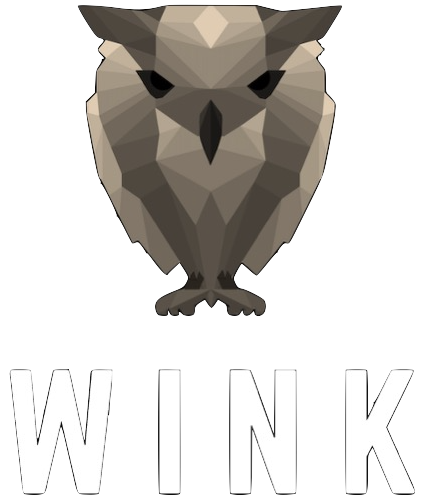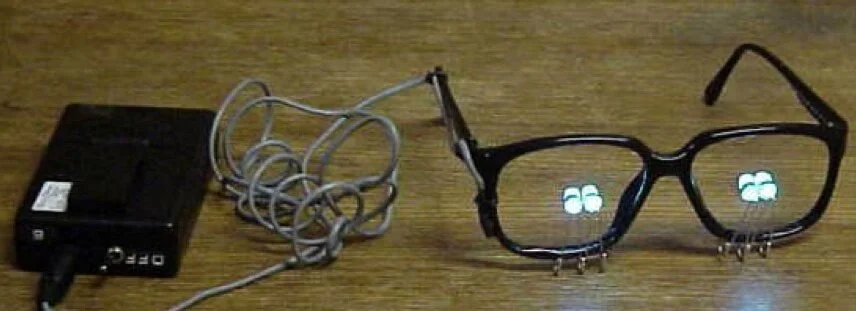#7 - A History of the LED Light Glasses
Bright light therapy (the other BLT) use to be administered with very large light boxes. The person would sit approximately 1 metre away from the light box, for about 1 hour. The old versions had several incandescent light bulbs - a serious fire danger - and these were then replaced with fluorescent tubes (but still produced significant heat). They emitted broad spectrum white light, and plugged into a wall socket. This meant the person needed to sit still whilst undergoing light therapy for their sleep problem.
One weekend, Dr Leon Lack got an idea.
He went into his shed and noticed his daughter’s bike lamp was shining in the darkness. The bike had been in the shed the whole weekend, yet the battery had remained strong. As he creeped up to look at the bike lamp, the light was getting brighter and brighter. He then realised that this experience could be extrapolated to current light therapy devices.
Instead of having a very large light source ~1m away from the eyes, why not make the light source smaller, and bring it right up to the eye?
A version of the Light Box containing numerous fluorescent tubes, and it’s successor, the portable light glasses.
When he went to work, he spoke to the Department’s technician about the idea of adding LED lights to glass frames. It was possible. He went to work on the 1st version, known as the ‘Buddy Holly’ version.
The original ‘Buddy Holly’ version of the light glasses - with two adjustable LEDs per eye, and connected to a 9V battery pack.
During this time, there was research being released about the potent effects of short wavelength light (ie, light that is perceived as being blue-to-green). Thus, several versions of these 1st models of light glasses were made - blue, blue-green, green, amber and red. Next was to test them!
Helen Wright was undertaking her PhD and the idea of testing the potency of different wavelengths of light from these portable light sources formed the basis of her thesis. I shared an office with Helen Wright, and managed to be a participant in a couple of her PhD studies.
One project tested the phase delaying effects (ie, pushing the timing of the body clock later, which would help people with Advanced Sleep Phase Disorder, or those wishing to travel westward), and another project to test the phase advancing effects (ie, push the timing of the body clock earlier, which is helpful for travellers going eastward, as well as teenagers experiencing Delayed Sleep Phase Disorder).
So every so often I would be given a new coloured set of light glasses (or a basic set of sunglasses as the control comparison condition), as well as a host of salivettes to collect melatonin from saliva (which would measure the timing of my circadian rhythm).
To cut a long story short, the projects were successful at changing the timing of the body clock.
Whilst I got to witness and participate in some great science being done, I then got to observe the rollercoaster ride of trying to commercialise science.
A Decade of ‘Inventing’.
Our University had a commercialisation arm called ‘Flinders Technologies’ where they tried to take scientists’ inventions by linking them with companies.
The idea of portable light glasses to help people with body clock issues, seasonal affective disorder, and travellers all around the world was big. This was a product that could serve millions (and potentially make millions).
Yet, the original ‘Buddy Holly’ design of the light glasses wasn’t so appealing. They needed to change. Flinders Technologies approached various companies, including Subaru, as did Leon and Helen. But Helen informed me that no one was happy with the designs.
A guy I knew many years before popped up in the local newspaper having won an industrial design award, so I got him connected to Helen and Leon, and he came up with a new design that become the preferred design. Great. But more needed to be done - including patents on the design as well as finding a company that would produce, distribute and market the new light glasses.
Mark II of the LED light glasses. Whilst the intention was to have the colour of the light to be blue, there were too many concerns about the potential harms of blue light. This led to a change in the colour of the light.
Many companies were approached, with various levels of interest.
At one point the Canadian army were interested. Naturally QANTAS was a company that could be a front runner with a pair of these new glasses for their travellers. And another time, Helen and Leon were flown to meet executives of another company in Japan (although they learned that the company wanted teenagers to wear the glasses to keep them up late at night to study … by the way, that could work, but it wouldn’t help their sleep).
Yet all attempts led to dead ends.
This occurred year after year. Enough rejections for Helen and Leon to lose hope. Furthermore, project managers for the light glasses kept leaving, further delaying progress.
2010
I forget her last name, but her first name was Karen. She was the next, new project manager. I recall Helen being understandably un-ethusiastic about attending yet another meeting to get a new project manager up to speed. Yet, Karen suggested seeking some initial small funding to make a couple new prototypes - and so she managed to secure AUD$10,000.
Thus, a new, 3rd version of the light glasses were born. These were existing frames that had an in-built torch. The torch was removed and the LEDs added. I was given a pair to help promote them when I went over to Europe for a sabbatical. I was excited about doing so. Yet, surprised how they were received. People were bemused, and dismissive of them. Made jokes about how ridiculous they looked. How nobody would wear them. There were also the usual comments that blue light was harmful to the eyes (despite a lack of convincing evidence for this).
My youngest son trialling the prototype blue light glasses in Sweden, to prepare his body clock to shift earlier, and thus more in line with Australian clock time.
2011-2012
Whilst the name of Flinders Technologies has changed to Flinders Partners, the essence of what they did just seemed the same. But it wasn’t. Although Karen had moved on, Anthony Francis was in charge of the Department, and he delved in.
A new company was going to be formed - it was called Re-Time, after the new name of the new version of the ‘green’ light glasses - Re-Timers.
A CEO was appointed, Ben Olsen.
And Helen and Leon were given 5% each of the company shares to show investors that the scientists were committed to this new invention.
The frames were constructed in Korea, and the internal parts and final assembly of the Re-Timers made at SMR Technologies (a 20-min drive from the University). SMR were given a very large stake in the new company.
By October 2012 - a decade after the science - the Re-Timers were commercialised and made available to the public.
Darth Vader Masks and Light Glasses
Like CPAP before it, the Re-Timers are another example of Australian science leading to a novel Australian invention. Besides the fact that CPAP make billions and Re-Timers make millions, their stories show that stamina and persistence are needed when someone happens upon a good idea - like putting a vacuum cleaner on ‘blow’ on someone’s face - or - findings an LED light shining in one’s backyard shed.
Disclaimer: We received project funding back in 2014 from Re-Time Pty Ltd, and also funding rejected from Re-Time since. So I perceive no conflicts of interest.
Special thanks to my former PhD supervisor, Prof Leon Lack, and my former PhD co-supervisor, Dr Helen Wright.







